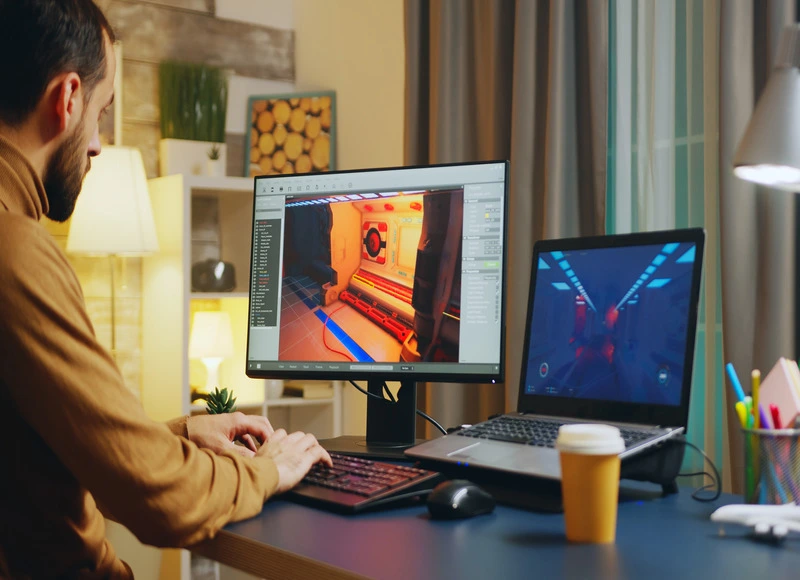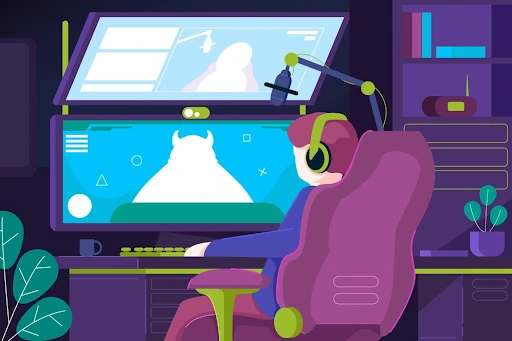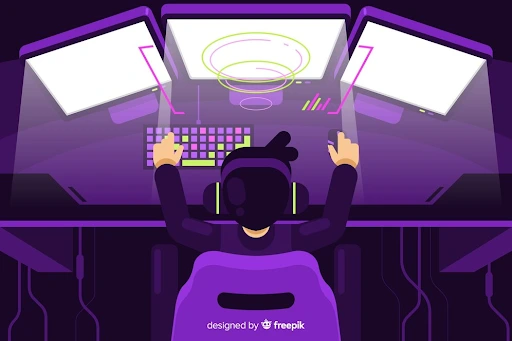Table of Contents
Master the process of game design with 'The Critical Process of Game Design: Creating Engaging Experiences.

Game design is the foundation of any good video game. Without thoughtful design guiding the development process, games easily crumble into boring, confusing or frustrating player experiences. Great game design separates legendary titles like The Legend of Zelda and Half-Life from the overwhelming pile of shovelware in app stores.
But what exactly does the design process look like? How do game designers take a basic idea into an engaging player journey that stands the test of time? This article will explore the crucial role design plays in game development, the step-by-step process professional designers use, and why getting this formula right matters more today than ever.
Why Game Design Matters

Game design refers to creating gameplay systems, rules, challenges, narrative elements and virtual worlds that result in an engaging player experience. Design determines the sequence of events and choices a player confronts, the emotional highs and lows they feel, and the meaning they take away when the journey ends.
In short, game design is the master blueprint for the experience developers want players to have. Just as an architect designs a house before construction begins, designers prototype major gameplay elements on paper long before a single line of code is written or pixel-rendered. So, if you want to hire AAA developer or designer, you need to know this.
This advanced planning solves several critical problems during development:
- Preventing Wasted Effort: Prototyping core design ideas first allows developers to validate if an idea will work and be fun. This saves enormous time and money by avoiding implementing features or assets that must be scrapped later.
- Empowering a Shared Vision: With an existing design document, artists, programmers and testers all work towards implementing the same player experience. This greatly improves efficiency and prevents individual teams from operating in a vacuum.
- Guiding Difficult Decisions: Designers must constantly balance competing priorities like simplicity versus depth, guidance versus freedom, or difficulty versus accessibility. Keeping the end goal player experience front and centre helps frame difficult trade-offs.
Game design has always been central to development. But in today’s market of endless entertainment options, well-designed games may enjoy outsized success compared to the competition. Let’s look at why.
The Rising Importance of Good Game Design
Advancements in game engines, digital storefronts, development tools and online resources have made creating games easier. This democratization of all stages of game development has yielded many positive outcomes:
- More Diverse Voices: Aspiring developers and smaller indie studios now regularly bring fresh ideas to life.
- Concept Experimentation: New genres like battle royales and auto chess originated from aspiring designers taking risks.
- Lower Barriers to Entry: Developers can focus more on creativity rather than wrestling with technical hurdles.
However, the dark side of these trends is that they need to resonate with players and stand out more than just easier production alone. This leads to problems like:
- Overwhelmed Players: Many games, especially on mobile, are released half-baked, poorly monetized or riddled with ads. Players must sift through a mountain of low-quality titles to find the gems.
- Shorter Attention Spans: With so many free-to-play games, players quickly jump to a different game when they lose interest or hit a paywall.
- Cloned Concepts: Successful new genres lead to an influx of copycats trying to cash in rather than innovate.
The abundance of choices and the ability to instantly switch games greatly encourage delivering a compelling experience up front. As hits like Wordle have shown, players are still eager to engage passionately, but subpar design often fails to hook them.
This is why game design has gone from an important process to an absolutely essential one for small indie studios or aspiring developers. Standing out in a sea of competition depends increasingly on the initial design decisions.
The next section explores step-by-step how seasoned designers approach crafting great player experiences.
The Game Design Process
While every studio approaches design differently, most follow a similar iterative process that brings an idea to life, much like a film passes from concept to finished product. Here are the most common steps:
Conceptualisation
The design begins by asking simple but crucial questions:
- What is the core concept or theme?
- What emotions do I want players to feel?
- What makes this fun or meaningful?
Answering these questions yields the seed of an idea to develop upon.
Prototyping
A prototype represents a rough first attempt at the idea. The goal is to test the most basic assumptions and mechanics quickly. This might only involve paper sketches, placeholder assets and written descriptions of how challenges or systems should operate.
Rapid prototyping exposes which parts feel fun and where more work is needed. Developers must remain agile and willing to cut elements entirely as issues emerge.
Iterative Improvements
Each cycle of testing and refining the prototype gradually pushes the game closer to the original vision. Designs evolve based on test feedback until the pieces come together into a cohesive whole.
This phase balances fixing problems against staying true to the core vision. Along the way, the game may transform far beyond that initial concept.
Pre-Production
With a proven prototype, work begins on narrative scripts, technical specs, art direction and gameplay systems. The goal is to take a rough approximation and scale it up into a complete product.
Here, the project starts to feel tangible as the assets and experiences players will see and interact with take shape.
Production
Full-scale development commences as assets are produced, code comes online, and formal playtesting begins. The design evolves, but more attention is focused on execution and polish.
This concludes when every level, system, asset, and mechanic come together in one unified, polished game ready for release.
Of course, the work does not end there. Developers monitor player data for usage patterns and feedback, and successful games continue evolving months or years after launch.
However, that long journey starts with a basic idea on paper. Strong design principles ultimately guide development at every stage.
Key Design Principles and How They Impact Players

Game designers are, in essence, experienced designers. Their job is to build the challenges and moments that people will remember. Each decision regarding rules, sequences, visuals, and incentives shifts the player’s emotional state to another level. This is especially evident in genre-specific games, e.g., online card games, where pacing and engagement must carefully align with user expectations.
While volumes have been written about design theory, a few core principles serve as reliable guides:
Clear Objective
Players require direction, which is in the form of a goal—an essential question or conflict that the player wants to be answered or addressed. For this reason, an entity's actions are associated with well-defined objectives to provide them with a sense of direction.
For instance, overcoming the evil boss is more pressing if he or she has razed the player’s village to the ground. It is not a victory that is sought here but rather a vengeance.
Sense of Progression
Players are willing to work to overcome obstacles, hoping to become significantly more powerful in return. New abilities, items, or statuses provide a satisfying levelling experience.
The yearning to advance makes players continue striving to achieve challenging objectives rather than become angry and give up.
Manageable Difficulty
The obstacles blocking players from their goals must seem difficult but ultimately achievable. Too easy and games become boring - too hard and they feel unfair.
Great games dynamically adjust challenges to match the player's rising skill level, maintaining engagement without going overboard.
Clear Choices
Players want agency over assembling the tools and skills to overcome difficult challenges. Giving clear options to choose between makes success feel earned.
For example, unlocking new chess pieces expands strategic possibilities while keeping rules consistent.
Reward Cycles
Frequent feedback rewarding player actions trains their brain to associate the game with feeling good. These regular dopamine hits, no matter how small, foster strong engagement.
Players must feel their effort was worthwhile, from high-score pop-ups to fanfare after big quests.
Of course, designers must balance and blend these principles to craft the right emotional rises and falls. The next section explores this blend more via examples.
Key Takeaways
This breakdown shows why good design principles are the fundamental building blocks of enjoyable player experiences and profitable video games.
To summarise:
- Design Matters More Than Ever: Being unique in today’s highly competitive market is more about being able to make players happy instantly than having the best graphics and sound.
- Design Tells a Story: Every mechanic and system weaves music and emotions to make audiences feel and experience the intended arc, as in film and theatre.
- Mastery Takes Practice: Creating fun experiences sounds quite simple until one tries to do it themselves. Prototyping and playtesting distinguish between solid concepts and those that can capture players for hours.
However, for developers who apply their ideas and efforts to game design in a careful and challenging manner, the benefits are only getting better. Die-hard fans wait for the next revolutionary experience that deserves their time and attention.
The window of opportunity is still available and has not been closed by any means.









